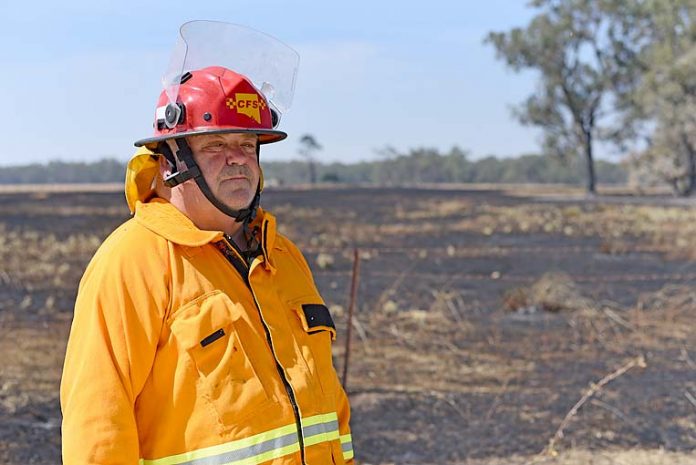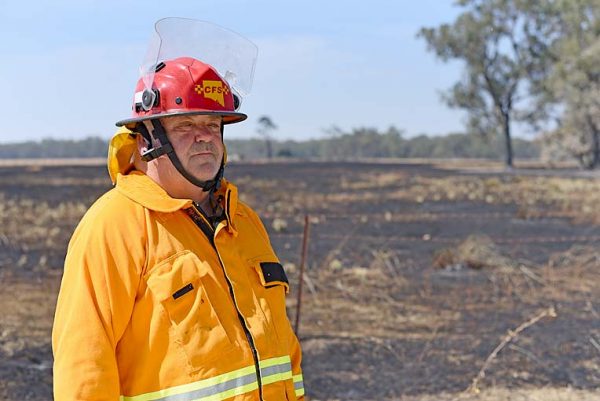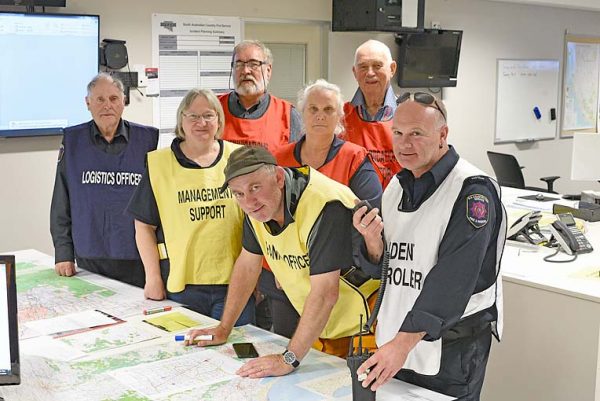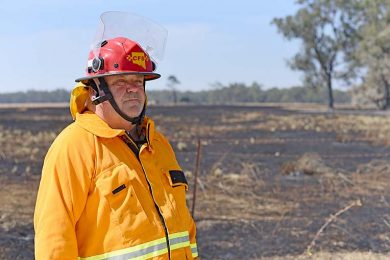

AN OUT-OF-CONTROL bushfire caused by a dry lightning strike south of Nangwarry spurred more than 200 of the region’s firefighters into action on Saturday in an effort to protect pine plantations.
The fire, which started in a paddock on Pow Lane, was first reported by Country Fire Service (CFS) air operations at around 11.40am.
While it posed no threat to any properties, the blaze quickly spread into OneFortyOne Pine Plantations and weather conditions made it difficult for firefighters to bring it under control.
The blaze was raised to a Level 2 incident and a total of 53 appliances from the CFS and forestry firefighting groups were deployed to the fire across the weekend.
While the fire was still listed as “going” at press-time yesterday, Wattle Range CFS group officer Fred Stent said firefighters had gained control of the blaze.
“It was a big challenge to get it under control, we had support from the air, we ended up with four bombers at one stage,” Mr Stent said.
“Even in the days after the initial burn, we have had problems here, yesterday we had seven or eight little break-outs, but we got control of them pretty quick.”
Mr Stent said the fire had burned around 480 hectares and he praised the firefighters for their tireless efforts to contain it to that area.
“It has mostly burned scrub and there has been a loss to some pine plantation, but overall I think we have had a pretty good save,” Mr Stent said.
“We were lucky we did not have any big assets such as houses and farms in the line of the fire.
“Potentially if it got a bit further than it did we would have had to do some asset protection, so we are fortunate in that sense.”
Behind the scenes, the incident management team for the Nangwarry fire were working hard to provide the best logistical advice to the firefighters on the ground.
Incident controller Jeff Brooks said it had been a busy couple of days in the Mount Gambier control centre, providing crews with everything they need.
“We obtain information so that we can predict fire behaviour whether that be weather forecasts, terrain et cetera” he said.

“We have got planning, mapping and communication going on here and we all have a pretty fundamental role to play.”
Not being on the fire ground itself all the time can make the job challenging, however Mr Brooks said communication was the key.
“It is challenging at times, but as long as you have got good relationships and the information flow is there, it usually works well,” he said.
“Air support is also crucial, without those guys we certainly would not get the outcomes that we do.”
As New South Wales continues to burn and South Australia counts the losses from horrific fires in the Adelaide Hills and Kangaroo Island over the weekend, Mr Brooks admitted the nation’s firefighting community was deeply impacted.
“It is upsetting to see what is going on across the nation because it impacts everyone,” Mr Brooks said.
“No one likes to see that devastation and there is a lot of people who have been impacted at some stage by fires, including our firefighters, so we are very sympathetic to what goes on out there.”
During Friday’s catastrophic conditions, hundreds of firefighters were required to attend a number of other blazes throughout the South East, the most serious occurring near Coonalpyn.
The fire burned more than 5600 hectares of farmland and a large portion of the Carcuma Conservation Park.
While CFS were still monitoring the blaze, they reported no current threats to any property near the fire ground.
Across the border, a number of fires started in the South West Victoria region as a result of lightning.
They burned more than 1000 hectares of land west of Casterton, around the Dartmoor and Digby areas.
Mr Brooks praised crews across the state and the nation for doing an exceptional job and encouraged other people to get involved.
“We are volunteers and everyone is giving up their own time willingly to be able to defend the communities, which deserves to be recognised,” he said.
“I would encourage anyone who is thinking about becoming a volunteer to get involved, as we have a variety of roles to cater for anyone.”







